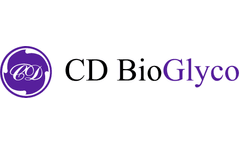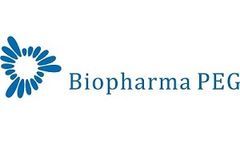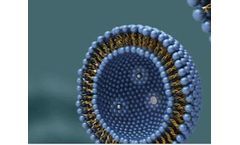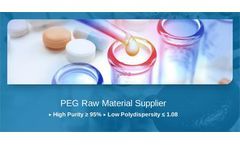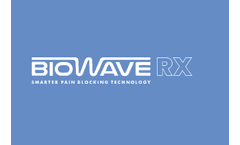Refine by
Hydrogels Articles & Analysis
41 articles found
In addition, the high tensile strength and fibril-forming ability of collagen enable it to be made into various forms such as tissue grafts, hydrogels, sponges, fibers, films, hollow spheres, and so on. The wide choice of manufacturing techniques and the excellent biological and physicochemical properties of collagen have stimulated the use of collagen scaffolds in various tissue ...
Nanogels (NGs), namely nanoscale hydrogel particles, are three-dimensional network systems formed by physical or chemical cross-linking of polymers. ...
Drug reservoir materials There are many drug reservoir materials that can be used, either a single material or a paste, ointment, hydrogel, suspension, solution, etc. configured with multiple materials. ...
For instance, Liu [3] prepared a new hydrogel by using recombinant human collagen type III powder as a raw material to repair and regenerate skin wound. The results showed that the hydrogels exhibited good water retention properties and a suitable degradation rate, which can promote the proliferation and migration of wound healing-related cells in vitro, while ...
This technology offers several advantages, such as precise drug delivery, improved patient compliance, and reduced side effects. Hydrogel Microneedle Patch Technology Hydrogel microneedle patches employ a hydrogel matrix as the base material. ...
The choice of cells will determine the type of tissue that can be printed. Biocompatible hydrogel: This acts as a scaffold or support structure for the cells. It provides a place for the cells to grow and helps to maintain their shape during the printing process. Common hydrogels used in bio-ink include alginate, collagen, and hyaluronic acid. ...
ByMatexcel
Biotin PEG can also be incorporated into cell culture media or hydrogels to provide a functionalized surface or scaffold for cell attachment and growth. ...
In this article, we will explore various types of microneedle patch technologies, including phase-transition microneedle patches, hydrogel microneedle patches, solid microneedles, hollow microneedles, coated microneedles, and dissolving microneedles. ...
At present, dissolving microneedles are the mainstream of the entire microneedle industry, and their main advantages are high-efficiency drug delivery, precise control of drug loading and more. Hydrogel-forming Microneedles Hydrogel-forming microneedles are prepared from a hydrogel polymer matrix. ...
What is Hydrogel? Hydrogels are a class of widely studied and applied biomaterials. ...
In order to elucidate the internal mechanism of d-SMG gelation and adhesion, further systematic identification and analysis of its components were carried out, and it was found that d-SMG is mainly composed of heparan-like snail glycosaminoglycans and snail proteins and other biomacromolecules , in which the new glycosaminoglycan is its main active component; the unique double-network gel system ...
This article mainly introduces the development history of hydrogels. The term hydrogel dates back to 1894, when it was first used to describe colloids made of inorganic salts. ...
One of the most important components for successful 3D printing is the ‘bioink’, the cell-laden biomaterial used to create the printed structure. Hydrogels are favoured bioinks used in extrusion-based bioprinting. Alginate, a natural biopolymer, has been widely used due to its biocompatibility, tunable properties, rapid gelation, low cost, and easy modification to ...
In order to solve the problems of traditional drugs, many nano-drug carriers with different shapes and structures have been developed, such as nanoparticles, nano-tubes/rods, nano-hydrogels, nano-micelles and nano-vesicles, etc. There are core-shell structure, cavity structure, network structure and so on. ...
In the late 1970s, researchers began to experiment with PEG hydrogels for cell cultures. PEG hydrogels are chemically well-defined, and multiple chemistries can be used both for their formation and chemical modification. ...
It is suitable for further functionalization into PEG derivatives and for hydrogel formation. The indicated molecular weight of 4-ArmPEG-OH is the sum of the PEG molecular weights of all the arms. ...
The following is an introduction to the recent major sucrose polymer products. Sucrose-based Hydrogels At present, the most widely used sucrose-based polymers are sucrose-based hydrogels. Sucrose-based hydrogels refer to a class of hydrogel materials synthesized from sucrose, which are mainly used in the field of biomedicine. ...
What is diabetic neuropathy? The most common complication of diabetes is neuropathy, which is nerve damagecaused by high blood sugar. Most neuropathy affects the legs, hands and feet and usually presents as numbness, pain or tingling. Diabetic neuropathy can also seriously impact the heart, blood vessels, digestive system and the kidneys. Symptoms can range from mild discomfort to extreme pain. ...
To improve the tissue regeneration ability of the scaffold, the team then paired silk fibroin with GelMA, a gelatin-based hydrogel because of its biocompatibility, degradability, stiffness, and ability to promote cell attachment and growth. ...
ByMatexcel
It is suitable for further functionalization into PEG derivatives and for hydrogel formation. The indicated molecular weight of 4-ArmPEG-OH is the sum of the PEG molecular weights of all the arms. ...





